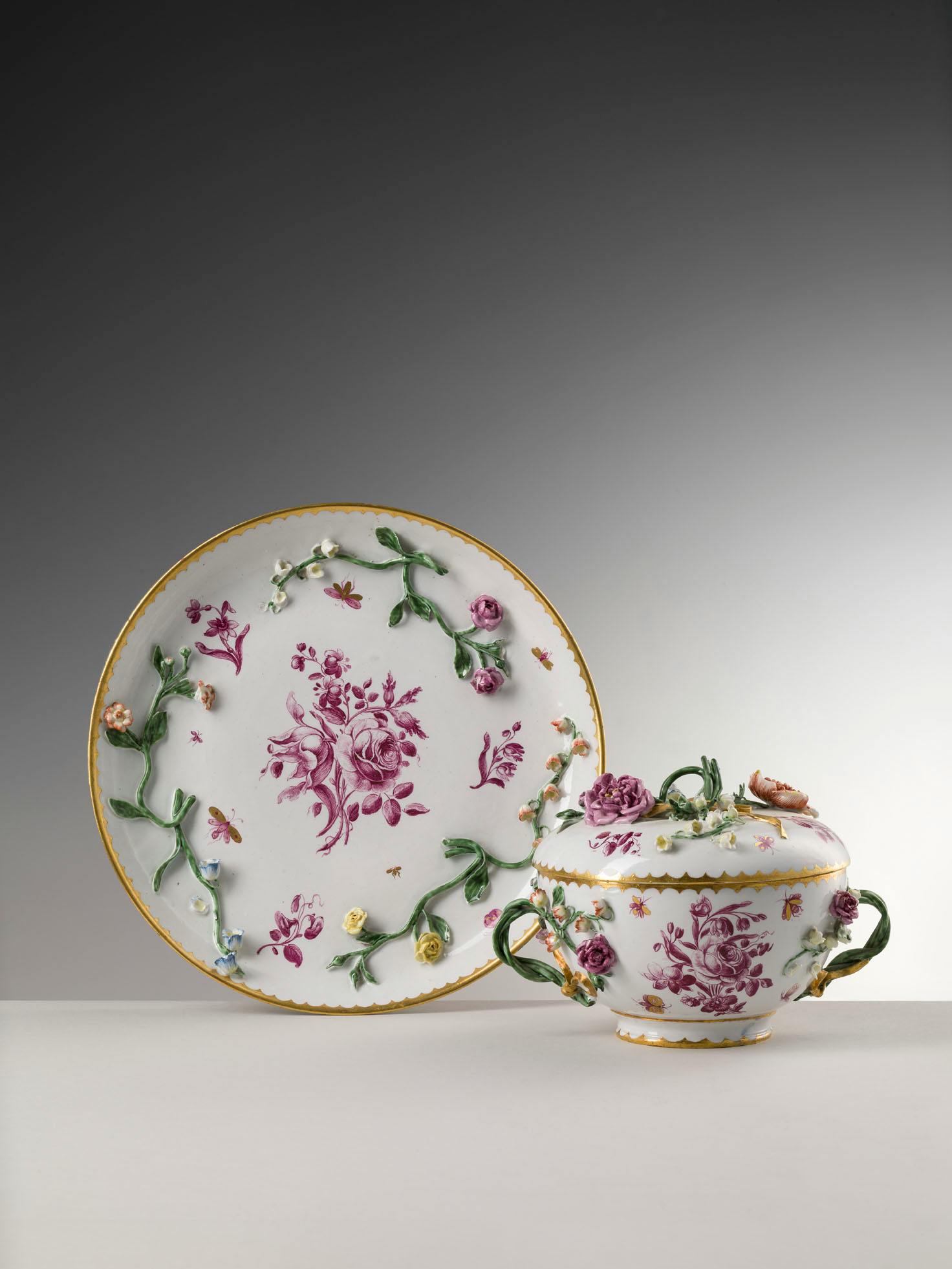Broth cup with saucer
Ginori Factory, Doccia
All European manufacturers have produced cups of this type until at least the 19th century. They had as common characteristics the considerable size, a lid, and a plate to contain the possible spilling of the broth. It is clear that the lid was introduced to keep the dish warm as a sort of very rich soup was served inside these cups, which had to nourish and heat throughout the day, as was the case in the countries beyond the Alps.
The invention of this kind of cup also found foundations in the Italian culture of the 16th century when the expensive gift of the birth tray, skilfully painted by renowned artists and used to bring nourishment to the mother, was replaced with a ‘restricted broth’ cup. It is known that the Duchess Eleonora of Toledo, in 1543 after the birth of Don Giovanni, asked: “Two of those midnight porcelain cups in which his Excellency usually eats soups”. The shapes of these cups represented in paintings or illustrated by Cipriano Piccolpasso in Li tre libri dell’arte del vasaio have evolved over time, however maintaining elements that can still be found in the models produced since the 18th century by European porcelain manufacturers.
The specimen presented here was made in the Doccia Factory founded in 1737 by a private individual, the Marquis Carlo Ginori. The latter, who arrived in Vienna on behalf of the Florentine Senate to pay homage to the new Grand Duke of Tuscany Francesco Stefano di Lorena, was influenced by the visit made to the porcelain factory of Claudius Innocentius Du Paquier founded in 1718, but in 1741 it became the property of the Emperor. Returning to his homeland, coinciding with the decline of the Medici dynasty, Ginori decided to start his pioneering enterprise in the hamlet of Doccia at the Popolo di Colonnata in Borgo Sesto (current municipality of Sesto Fiorentino).
Our cup reveals the high level achieved by the manufacture especially in the sculptural representation of the flowers, which shape the lid knob and the two handles and which frame the refined pictorial decoration also proposed on the bottom of the cup. Its collecting history is to be sought in the commissioning of the Bourbon dukes of Parma, as it arrived at Pitti Palace only in 1867 from the “Royal Palace of Piacenza” as revealed by the count of the General Conservator Inventory of Furniture of Pitti Palace.
